#ainu culture
Photo

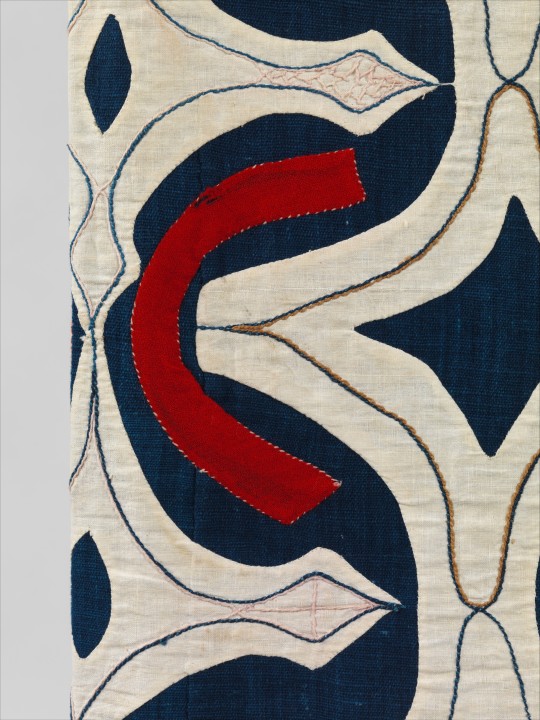
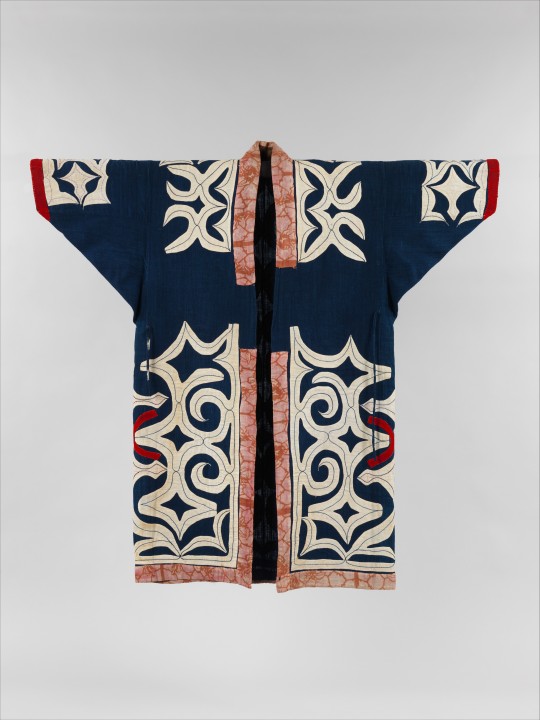
Ainu robe, Meiji period (1868–1912), cotton and wool with applique (kiri-fuse), 48 1/4 x 50 1/2 in. (122.6 x 128.3 cm)
425 notes
·
View notes
Text
VIDEO: Atsushi Monbetsu belongs to the Ainu Indigenous group that traditionally lived in what is now northern Japan, as well as territory now in Russia. But now he has reclaimed his identity and some of the traditional practices he considers his birthright.
#indigenous#culture#indigenous russia#indigenous russian#important#russia#fypシ#fypage#colonization#landback#indigenous japan#indigenous art#indigenous rights#indigenous people#japanese indigenous#japan#nippon#ainu#ainu culture#fyp#land back
92 notes
·
View notes
Text


Capítulo 3: El origen de un país y su prehistoria, un paseo por la historia del país del sol naciente.
-
El Pleistoceno:
-
Sean bienvenidos, a una nueva serie, de arqueología prehistórica, en esta ocasión, nos trasladamos al país del sol naciente. En los capítulos anteriores hablamos de: ¿Cuándo llegaron por primera vez los homínidos a Japón? ¿De qué vivían?, hablamos algo de su geografía, aunque no todo lo que a mí me hubiera gustado, por eso en este episodio y en los venideros la iremos analizando y como conformó la prehistoria japonesa hasta su final, también comentamos el inicio de la prehistoria humana a nivel global y de los primeros humanos de africanos que hablamos de forma superficial, también hablamos de ¿Quiénes habitaban Japón cuando ellos llegaron? Y de ¿cuándo llegaron? Respondimos a las preguntas de forma sintética, en los siguientes capítulos hablaremos más de cada uno de ellos en profundidad, como es debido dicho esto pónganse cómodos que empezamos.
-
El pleistoceno fue un periodo glacial en el cual los casquetes polares eran enormes, no toda la tierra estaba cubierta como se ha hecho creer, había zonas con praderas, una vez aclarado esto damos paso a la geografía que la abordaremos unos cuantos episodios para entender mejor su historia, prehistoria entre otros temas.
-
Geografía nipona en la prehistoria:¿Cuándo se formó el archipiélago japonés? Hay dos teorías, la primera dice que lo más probable es que se formaran por partes cada una de las cuatro grandes islas y otra dice que salieron directamente de una sola formación, es decir, que las placas tectónicas en un solo sismo salieron las cuatro islas¿Qué opinan ustedes? Lo que sí se sabe es que hokkaido se formó de una tajada hace 20 millones de años, yo aporto una tercera teoría que hubiera pequeñas islas y que a raíz de lay se formará el resto de las islas, japón se sitúa en el cinturón de fuego, lo que lo convierte en un objetivo de las actividades volcánicas ¿Cómo se llaman las placas tectónicas que forman el archipiélago? Esta pregunta y muchas más la veremos en los próximos capítulos.
-
Vamos a dividir este capítulo en sus epígrafes para poder hablar de la geografía gracias por valorarlo.
-
第3章 国の成り立ちと先史、日出ずる国の歴史を歩く。 - 更新世: - 先史考古学の新しいシリーズへようこそ。この機会に、私たちは日出ずる国に移ります。 前の章では、ヒト科が初めて日本に到達したのはいつですか? 彼らは何を食べて暮らしていたのでしょうか?私たちは彼らの地理について少し話しましたが、私が望んでいたすべてではありませんでしたので、このエピソードと今後のエピソードではそれを分析し、それが終わりに至るまで日本の先史時代をどのように形作ったのか、また、古代の始まりについても説明します。世界レベルでの人類先史と、私たちが表面的に語る最初のアフリカ人についても話しますが、彼らが到着したとき、誰が日本に住んでいたのかについても話します。 そして彼らはいつ到着しましたか? 私たちは総合的な方法で質問に答えました。次の章では、それぞれの質問について詳しく説明します。言うまでもなく、安心して始めましょう。 - 更新世は、極冠が巨大だった氷河期で、信じられているように地球全体が覆われていたわけではなく、草原のある地域もありました。これが明らかになると、地理の問題に道が譲られます。これについては、いくつかのエピソードで取り上げます。その歴史、先史時代などのトピックをより深く理解するために。 - 先史時代の日本の地理: 日本列島はいつ形成されたか? 2つの理論があり、1つは4つの大きな島がそれぞれ部分的に形成された可能性が最も高いというもので、もう1つは単一の地層から直接生じたもの、つまり1回の地震でプレートが残ったものであるというものです。四島についてどう思いますか? 知られているのは、北海道は2000万年前に一片に形成されたということである。私は、小さな島々が存在し、その結果として残りの島々が形成されるだろうという3番目の理論を提供する。日本は火の輪の中に位置している。列島を形成するプレートを何というでしょう? この質問とさらに多くの質問を次の章で見ていきます。 - 地理についてお話しできるよう、この章をエピグラフに分割する予定です。ご評価いただきありがとうございます。
-
Chapter 3: The origin of a country and its prehistory, a walk through the history of the country of the rising sun.
The Pleistocene:
Welcome to a new series of prehistoric archeology, on this occasion, we move to the country of the rising sun. In the previous chapters we talked about: When did hominids first arrive in Japan? What did they live on? We talked a little about their geography, although not everything I would have liked, so in this episode and in future ones we will analyze it and how it shaped Japanese prehistory until its end, we also discuss the beginning of human prehistory at a global level and the first African humans that we talk about superficially, we also talk about Who inhabited Japan when they arrived? And when did they arrive? We answered the questions in a synthetic way, in the following chapters we will talk more about each of them in depth, as it should be said, make yourself comfortable and let's begin.
The Pleistocene was a glacial period in which the polar caps were enormous, not all the earth was covered as it has been believed, there were areas with grasslands, once this is clarified we give way to geography, which we will address in a few episodes to understand better. its history, prehistory among other topics.
Japanese geography in prehistory: When was the Japanese archipelago formed? There are two theories, the first says that it is most likely that each of the four large islands were formed in parts and the other says that they came out directly from a single formation, that is, that the tectonic plates in a single earthquake left the four islands. What do you think? What is known is that Hokkaido was formed in one slice 20 million years ago, I provide a third theory that there were small islands and that as a result of this the rest of the islands will be formed, Japan is located in the ring of fire , making it a target for volcanic activities. What are the tectonic plates that form the archipelago called? We will see this question and many more in the next chapters.
We are going to divide this chapter into its epigraphs to be able to talk about geography, thank you for valuing it.
#日本#history#japan#archeology#歴史#geography#prehistory#考古学#地理#先史時代#education#教育#culture#文化#ainu culture#アイヌ#pleistocene#更新世
22 notes
·
View notes
Text
Blaze's Compendium Entry #5:
What does the fox say? Ask Cironnup- Kamuy

Warning: Faith and religion are important real life topics, that tackles the culture and way of life of millions of real life people. It is a cultural expression, and must be respected by all means. Here, we use a video-game series only to ignite the flame of learning about the matter, using its art when well depicted, but we do this with all due respect to the cultures we talk here, grounded by real life sources, cultures and people. And i mean this with respect. Hope you all enjoy.
Let's get back to Japan once again, but this time to the northern Island of Hokkaido. There lives the Ainu people. Today we are not only talking about my favorite Megami Tensei creature, but also about very interesting entities, culture and people. Please, sit back and enjoy the ride.
(Please, note that i don't speak Japanese. I had to go over English sources as well use software to translate. If i got anything wrong, let me know!) This time, all sources will be available at the end of the post, since iv used them extensively, it got pretty messy to pin down the exact points, so will list them below)
Cironnup (Also called Chironnup or Chironnupu in Japan) in the Ainu tongue translates to ''Those who we kill many''. And it can be used to describe foxes in general, but also is referred to a Kamuy.
For us to understand what Cironnup is, we first need to dive in the meaning of the word Kamuy, which is very, very interesting.
In the Ainu tradition, Kamuy can be a complex term to translate. It can be defined as a sort of divine spirit, supernatural entity or even a god. The Foundation for Ainu Culture translated it as the word god, when i emailed them about the matter. Its similar to the word Kami, in Shinto Japan. It's a tricky word to translate that has no perfect match in English. But let's go with god.
Sometimes in the modern day Japan, the word can also be translated as Kami, or Hotoke (Spirit). But as their English counterparts, those words don't match 100% correctly the true meaning of the Kamuy word.
The Ainu belief system comes from their relationship with the Kamuy. This belief came from people who have a deep connection with nature, and helped them to survive and thrive in their environment, as well protect them from disasters and other calamities.
The Ainu belief system does not have a central scripture, like the Christians have the Bible. Their views of the Kamuy can be interpreted differently through time and place, but remain somewhat similar. It's good to remember the Ainu is a diverse group. Beliefs, customs and regional dialects can vary from region to region.
But ok, then what is a Kamuy? You ask.
The Kamuy description can vary, but they are spirits, supernatural entities, or gods. They can be attributed to many creatures and objects. In fact, there's Kamuy for diseases, earthquakes, fauna, flora, and more. It's like this belief system comes around the idea that everything and everyone has a soul.
There's not only natural occurred Kamuy, but also the ones that came from man-made objects, like spears, boats.
The relationship between Kamuy and Human are complex. Some Kamuy can provide for Humans, like animals that provide meat and fur, or plants that provide food and remedy. Others can protect and take care of Humans. There's also Kamuy who bring calamities, like diseases such as smallpox. (Sources where keen on Smallpox, it seems it got pretty common in Hokkaido some times.)
Some examples are like the Fire Kamuy, that not only provides heat and cooked food, but also hears Humans and take their pleads to other Kamuy in case they still have not answered. the owl related Kamuy remain outside villages looking after their people.
Another good and very specific example is the Salmon Kamuy. Known as Chep-Kamuy. Salmon was a much needed fish for the Ainu, so they often built their villages next to streams where they could find this fish. Thus the importance.
Kamuy are often portraied as free willed entities. They live their lifes just as we do, and they can be good or evil. Some times they are not eivl, but there can be a conflict of interests between Humans and Kamuy. Being good or bad, Kamuy would only come back to their world once their mission is accomplished in the Human world.
It is said that the Kamuy have their own relatives and friends in their world, so it is at least implied that are many instances of one Kamuy. For example, many Chep-Kamuy living in their world along many Cironnup-Kamuy. For this reason, when a good Kamuy is going home the Ainu offers them hospitality, food, drinks in rituals so they can either thank the entity for what was given.
This way, according to the Ainu, the Kamuy will come back home happy and satisfied, thankful for the Human hospitality. They will tell all their friends and family about how good they were treated on Earth. The Ainu believes that not only the hospitality offered to the Kamuy makes they wanting to come back, but also they could bring more Kamuy along, after telling their relatives about how good they were treated. This also make that specific Kamuy more respected in their world. Both sides having a mutual relationship.
In the case of bad Kamuy, like disease, the tactics were to run away from it. Some Ainu even erasing their own footprints in the snow so they can't be tracked by the malevolent entity. They were also treated with respect, but in more of a fearsome way.
The Kamuy often inhabited animals and plants, for example. So, in the case of wild animals the way a Kamuy go home is when the animal is killed. Hunting deprives a creature of their life, but it is necessary for survival. This act is seen as the Humans liberating a Kamuy back to their world, after have killed their carcass. (In the case of wild animals)
One of the more famous, and important of those rituals were related to the Bear Kamuy. (Kin Un Kamuy) I wont go too deep into it, because it's complex, but basically the Ainu took care of a bear cub for a whole year, even living among them as another member of their society, before slaughtering it with arrows, and eating its meat. This way, the Ainu hope the Kamuy goes to its world grateful for the hospitality and the time it spent with Humans.
-You can remember Teddie from Persona 4 kinda having this motif in his Persona ''Kamuy''.
As you can see, the Kamuy is a fascinating subject. They can be good, bad, they are multitudes, they have families and lifes, their own personalities and interests just like Humans. They can be humble, hateful, have pride or a good sense of humor. They can be related to natural phenomena, animals, plants. There's just a lot to cover about Kamuy.
My note here, but it remembers me a lot of the concept of Jinn and Daemons, from Islamic and Greek pantheons respectively.
BACK TO CIRONNUP, THIS WAS A LONG TURN
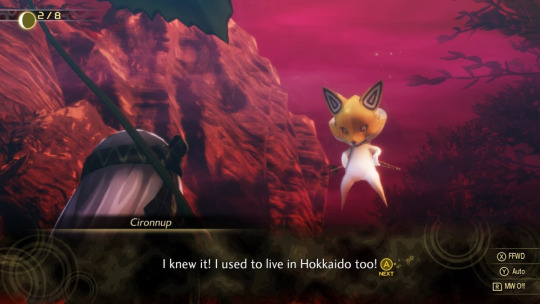
Cironnup-Kamuy is the fox deity in this context. Foxes by themselves were called upon many names in the Ainu culture. Cironnup is one of those names. But it could also be Kemakosnekur which means ''light footed god'' according to the Foundation for Ainu Culture.
Cironnup appears in many tales and are generally known to be Kamuy that listens to people's requests, brings food, can protect against illness and foreign enemies. They can appear in premonitory dreams to warn about calamities. But there are some instances of Cironnup doing mischief and evil deeds, like possessing people, transforming into people as disguises.
As in many cultures around the world, foxes are treated like cunning and natural tricksters. But the Ainu had a deep relationship with the foxes, since they were essential to their survival in some times. They could be deceiving, but also could bring good help. This could explain this duality.
The name Cironnup could also be referred to other creatures, it can be names of villages, and could also describe wild beasts. It could describe many other wild animals that were heavily hunted by the Ainu, but slowly the name was more and more associated with the Fox. (The Fox itself could have different names in different regions as well.)
In the specific case of Cironnup, the premonitory nature of it were also brought by some regions using fox skulls as divination tools. They could also be used as guardians for Sea Fishing.

Cironnup calling its Kamuy friends for help? In Japanese this attack is called ''Kitsunebi Aputo'' Which mixes the Kitsunebi flames, with the Ainu word for rain, meaning a rain of a fox fire. Although... Kitsune is a whole different matter.
In my researches i found a Brazilian web page dedicated to Japanese culture. There, i found a story about the author being hunting with an Ainu, and they talked a bit about their relationship with the Cironnup Kamuy.
According to the author, they were out hunting when he noticed footprints in the snow that were from a Fox. He then proceeded to ask the Ainu hunter if they should go after it. But the Ainu stopped the Brazilian hunter, informing him that if they catch the fox first, the Cironnup-Kamuy would certainly go around the woods telling all other animals they were hunting nearby. Because by killing the Fox, the Kamuy would be liberated of the body.
When the fox was indeed caught, they would tie their snouts, so it would keep its mouth shut and wont spoil their hunt. The author did not seemed conclusive if this was a general and normal hunting behavior for the Ainu, but being a first hand account (And written in my own native language) i found it interesting to post here.
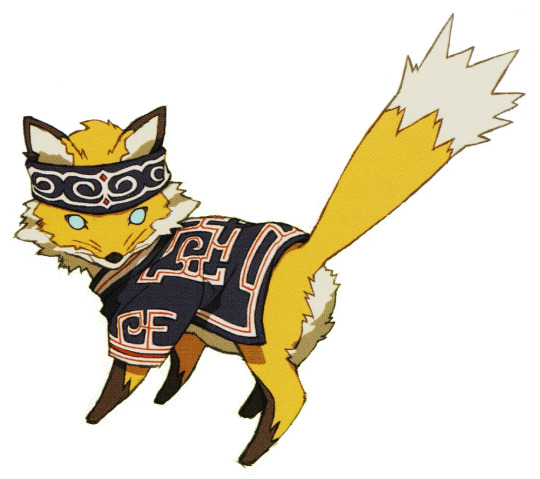
Cironnup's beta design for Shin Megami Tensei IV: Apocalypse. It wears some clothing inspired by the Ainu.
The Human Race has a very interesting relationship with foxes in general. Their depictions usually repeats itself through our history, because they are very interesting animals by themselves. Me myself, I've lived my whole life, in a culture where foxes are absent because they are not naturals to the place where i live.
Their relationship with foxes makes me wonder and reflect about it, since the creature does indeed have a duality. While it can be deceiving and cunning, it has also a protective nature, it is strong and some times even lovable. Foxes are also signaled worldwide as an awareness and investigative symbol, which is also portrayed by Cironnup, sometimes presenting danger from far away.
Still worldwide, the foxes are treated like the tricksters of the nature, masters in deceiving and playing pranks.
The Ainu fascinated me not only as a culture, but also in their relationship with the nature, not exactly looking at the world around only as resource, but also with care and respect.
I hope one day i can visit Hokkaido and learn more about the Ainu culture personally.
-Ainu online dictionary Ainu-to-shizen Degitaru-zukan”by Ainu Museum
Sources:
-Akarenga JP (A Hokkaido culture foccused web page)
-Commentary on the book “Karirinka-to-kitsune-no-kamisama” [カリリンカときつねのかみさま] (2012) by Sakiko Yatani Provided by the Foundation of Ainu Culture
-The Foundation of Ainu Culture (Inquired via e-mail)
-Ainu Legends, Cironnup Daisuke Tchê (The tale about the Ainu hunter, in portuguese)
Special thanks go for @researcherposts for helping me reaching the Foundation of Ainu Culture.
Again, if i got anything wrong, please correct me! I will be more than help to fix anything :)
#mythology#ainu culture#Cironnup#Ainu#hokkaido#mythology and folklore#shin megami tensei#atlus#blazescompendium#blazescompendiumentry
64 notes
·
View notes
Text
Critically Endangered Language Introduction:
Ainu Language
アイヌ・イタㇰ

Photos provided by AMNH
Some information about the Ainu language:
It’s critically endangered, meaning there are very few native speakers left, who are also elderly, and young people are not picking up the language. Ainu doesn’t have its own original writing system, so Latin script and a modified version of Katakana are used. For this post I will be using both Latin and Katakana script. You can read more about the Ainu language and people on Wikipedia, here and here.
Example Words & Phrases ↓
Provided by Wikitravel at this link
Irankarapte
イランカラㇷ゚テ
Hello/Nice to meet you
E=iwanke ya?
エイワンケ ヤ?
How are you?
Ku=iwanke, iyairaykere
クイワンケ、イライライケレ
Fine, thank you
E=re hemanta ya?
エレ ヘマンテ ヤ?
What is your name?
K=ani anakne ______ ku=ne
カニ アナㇰネ _____ クネ
My name is ______ .
E
エ
Yes
Somo
ソモ
No
Amerika-itak
アメリカイタㇰ
English Language (literally: “America Language”)
Kunne
クンネ
Black
Retar
レタㇻ
White
Katuwa
カツ゚ワ
Grey
toy-haru
トィハル
(fresh) vegetables
nikaop
ニカオㇷ゚
(fresh) fruit

Please correct me if I made a mistake
#endangered languages#endangered language#critically endangered#critically endangered language#critically endangered languages#ainu#ainu language#dying language#endangered culture#Critically Endangered Language Introduction#Language Introduction#language preservation#historic preservation#ainu culture#ainu people#language learning#beginner language#beginner ainu
44 notes
·
View notes
Text
Had an HC that the swordsmith village were descended by Ainus. So here's fanart of Kotetsu and Tetsuya (HagaKana fanchild design by my friend Harry Froggo on FB) in Ainu clothing with a cute Shiba Inu they found along the way🐕🐾✨
Harry Froggo FB: https://www.facebook.com/profile.php?id=100051700563602&mibextid=ZbWKwL



#kny kotetsu#kotetsu kny#demonslayerseason3#demonslayer#kimetsunoyaiba#demon slayer fanart#swordsmith village arc#kotetsu#hagakana#hagamori#hotaruhaganezuka#kozokanamori#fanchild#ainu culture#ainu
20 notes
·
View notes
Text
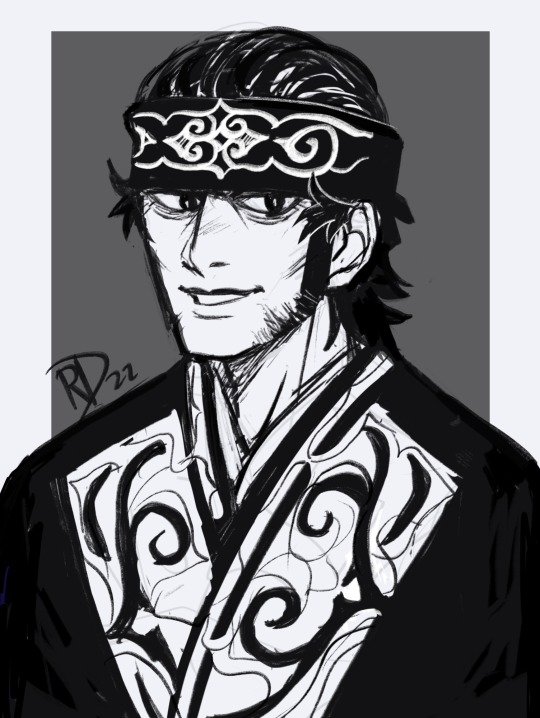
🦌
134 notes
·
View notes
Text
youtube
Born in Nibutani, Kaizawa Tōru grew up alongside his craftsman father, Tsutomu, and other Nibutani craftspeople. His great-grandfather, Kaizawa Utorentoku was well known outside his community for his woodcarving skills in the 19th century. While valuing the traditions inherited from his great-grandfather, today Kaizawa Tōru creates new works that are both rooted in Ainu tradition and reflections of his own personality.
Learn more about Ainu woodcarving at 'Ainu Stories: Contemporary Lives by the Saru River' from now until 21 April 2024: https://bit.ly/3GhIL87
4 notes
·
View notes
Text

My first Ainu embroidery project!!
9 notes
·
View notes
Text

Kim-un-Kamuy, the Ainu Kamuy of bears and mountains. One of the most revered Kamuy, Kim-un-Kamuy is praised for his strength. However at the beginning of creation another Kamuy who rivaled Kim-un-kamuy’s strength challenged the bear Kamuy. This Kamuy was known as Etaspe-Kamuy, the Kamuy of Sea Lions. The two agreed to settle their rivalry with a race, whoever lost would have their respective species be banished to the sea. Though the race was close, the mighty Bear spirit won, with the Sea lions being banished to the Sea. In spite of their loss, Etaspe-Kamuy will provoke Kim-un-Kamuy by sending his Sea lions onto the shore, while Kim-un-Kamuy will send his bears to push them back into the sea. Another myth describes that when Kim-un-kamuy’s wife and daughter got lost in the mortal world, an Ainu village found them. When Kim-un-Kamuy came to rescue them, the village surprised him with a wonderful feast, a feast so delicious and wonderful that it lured several other Kamuy. At the end of the feast as Kim-un-Kamuy was leaving the village promised him that if any of his family were to be lost in the mortal world again, they’d guide them back to Kim-un-Kamuy with another banquet.
Kim-un-Kamuy is one of, if not, the most well known Ainu Kamuy. His importance among the Hokkaido Ainu is magnified due to the island being a mountainous region, as well as Hokkaido being the home of many brown bears. However the most conversed aspect of the worship of Kim-un-Kamuy is the sending back ritual. The ritual entails an Ainu village adopting an orphaned or abandoned bear cub. For a year the villagers raise the cub, feeding it and treating it with the up most amount of love. After a year passed the villagers then shoot the bear cub to death with arrows. The Cub’s death isn’t seen as cruel or inhumane to the Ainu, as in their belief, the cub’s death sends it back to its originator: Kim-un-Kamuy, in a sense continuing the tradition of the 2nd myth mentioned above.
#art#character design#creature design#mythology#japan#ainu#ainu culture#kamuy#deity#bear god#strength god#animal god#mountain god#kim-un#kimun#kim-un-kamuy#kimun-kamuy#indigenous
6 notes
·
View notes
Text
Golden Kamuy is amazing

A couple of weeks ago a friend finally convinced me to give Golden Kamuy a shot. Now, I had been curious about the show for a while, given that I knew one of the main characters was Ainu. But the fact that it was shonen (or rather seinen) kinda stopped me, because I do not have the highest opinion of Shonen/Seinen stuff.
But... I got hooked rather quickly on this show. Because... It is actually pretty cool.
To break it down very simply: The series is kinda about getting back Ainu gold to the Ainu, to allow them to retain some sort of independence in a changing Japan of the early 20th century.
Or, to put it differently: The series is about two things. About indigenous rights and veteran support. Because out of all the characters they are either indigenous - or they are veterans. The main character, Sugimoto, is a veteran. The other main character, Asirpa, is an Ainu girl of a mixed indigenous background.
One of the central issues underlying most of the characters are veterans of the Russo-Japanese war. And most of them are traumatized and do not receive enough benefits to actually make it. Which not only spurs a lot of them to look for that gold - but also to associate with some shady people.
It is kinda hard to talk about antagonists in the series, because the sides switch a lot. But the closest thing to a main antagonist is a veteran himself - who has manipulated other veterans (specifically marginalized veterans) to serve his own goals.
I have seen a lot of talk about this series in terms of the characters being "psychos" or "crazy". But really, for the most part that is not it. For the most part everyone is just traumatized af and due to this not acting... well, quite rationally.
The series even talks about this. How they have not "really" returned from the war.
Now, don't get me wrong. The series is often very silly. In a way that at times very much crushes with the themes. Like, there is a ton of fecal humor going on there. Like, A TON OF IT.
And also a weird amount of Ainu cooking. At times it feels like watching a cooking show. But then again: I am all here for cooking. And I am all here for the stuff about Indigenous knowledge.
So, yeah. Just give it a shot. It is a pretty awesome show.

7 notes
·
View notes
Text
Ainu Indigenous
#indigenous#culture#indigenous russia#indigenous russian#russia#important#colonization#fypシ#fypage#landback#Japan#Nippon#indigenous people#indigenous culture#Indigenous japan#Japanese indigenous#Ainu#ainu culture
30 notes
·
View notes
Text

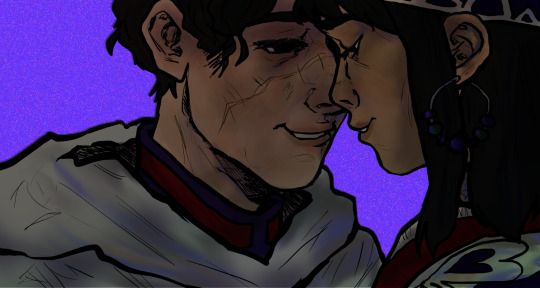


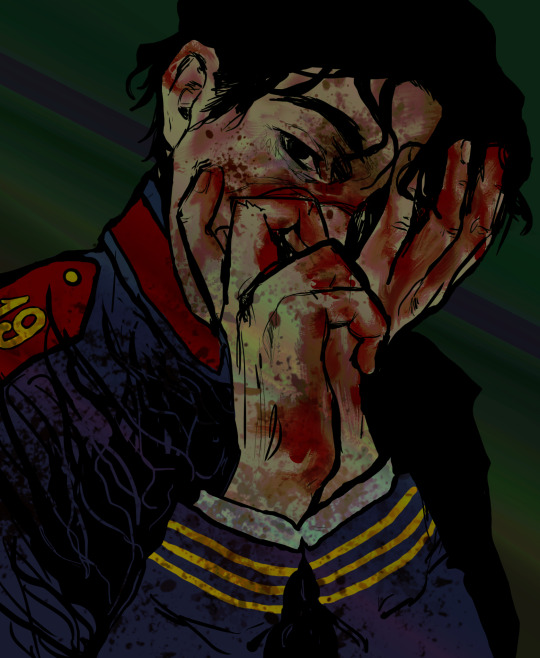
my gk girls
29 notes
·
View notes
Text

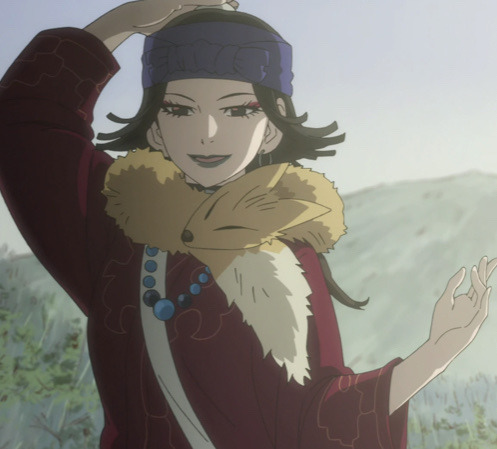
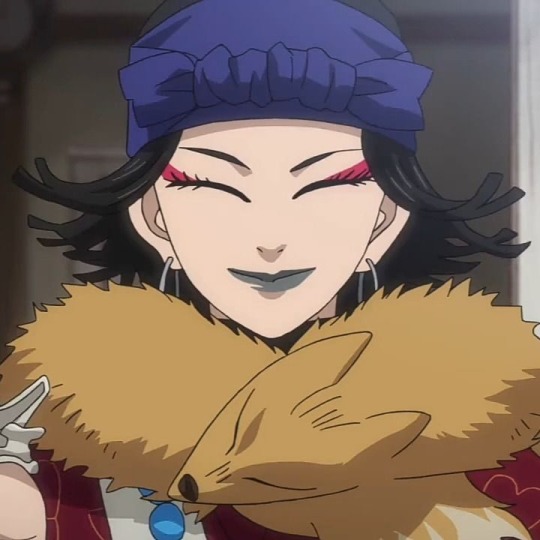



“Shall I try some divination?”
-𝐈𝐧𝐤𝐚𝐫𝐦𝐚𝐭
Inkarmat supremacy<333
☾∘∙ creds:
@Satoru Noda (Danbooru/Creator of Golden Kamuy-)
✧ ∘ 𝙋𝙡𝙚𝙖𝙨𝙚 𝙜𝙞𝙫𝙚 𝙘𝙧𝙚𝙙𝙞𝙩 𝙞𝙛 𝙪𝙨𝙞𝙣𝙜/𝙧𝙚𝙥𝙤𝙨𝙩𝙞𝙣𝙜-!
☆ ° 。ㅤ→ ༄ ‧₊˚
#anime icons#anime pfp#manga icons#anime#animanga#manga pfp#manga#anime layouts#golden kamuy#inkarmat#ainu mosir#ainu culture#kamuy#foxes#hokkaido#sakhalin
47 notes
·
View notes
Text
And now, with no shortage of food
With no troubles to beset them
People live their tranquil lives;
And my mind is at peace.
Chiri Yukie, The Song the Sea God Sang
#Chiri Yukie#The Song the Sea God Sang#The Song the Owl God Sang#tranquility#calm#peace#peace quotes#UN International Day of Peace#International Day of Peace#Ainu poetry#Ainu literature#Indigenous poetry#Indigenous literature#Ainu culture#poetry#poetry quotes#quotes#quotes blog#literary quotes#literature quotes#literature#book quotes
6 notes
·
View notes
Text
Ainu Volo Fanart
Since Gamefreak and Ao3 (since there's no official tag for this) are absolute cowards for not fully putting the implications of Indigenous-coloniser relations for Pokémon Legends: Arceus into practice, I used a Picrew to make a fanart of Volo, but with Ainu facial features because they are the indigenous people of Japan's Hokkaido islands.

Of course, their (I headcanon Volo as non-binary - he/they pronouns - or, at least, willing to crossdress) clothes aren't traditional because 1) there was only a few options for traditional clothing on the Picrew, and 2) I headcanon that they have to do with what he can make/buy, because his culture has been wiped out. The black lipstick is the colour which Ainu women would use as a spiritual protection and coming of age, and although the headwrap is more of an African style, Ainu women would use a similar but darker head covering.
#pokémon legends arceus#pokémon volo#volo fanart#it's not racebending if he's ainu-coded#ainu culture#made with picrew#come on you cowards!#indigenous representation#indigenous genocide#anti diamond clan#anti pearl clan#PLA#historical inaccuracies#gender noncomformity#gnc#gnc man#gnc Volo#nonbinary Volo#nonbinary man#problematic f/o#villainous f/o#villain f/o
14 notes
·
View notes